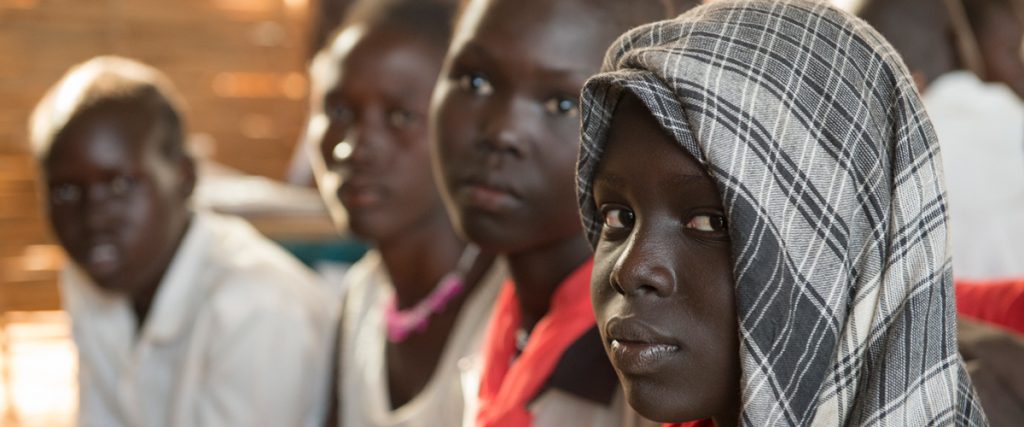
What is the future of humanitarian action?
We live in times of unprecedented humanitarian need. Globally, aid agencies estimate that 100 million people worldwide need some form of humanitarian help, at a cost of USD 22 billion.
If you are anything like us, you are probably sick and tired of humanitarian pieces that begin with this framing. The problem is stated so often that we have stopped listening to it: growing needs plus dwindling resources equals a humanitarian system in the grip of a crisis of confidence, and millions of people left without the support they need.
Today, humanitarians and humanitarianism are needed more than ever before. But to remain relevant we must change. We must have the courage to question old certainties, the vision to change and do away with redundant or outdated approaches, and the conviction to defend what absolutely cannot change.
What is the future of humanitarian action? We think it lies in three key areas.
Localization: stronger local capacity, better international support
Confirming the need for a greater localization of aid, the 2016 World Humanitarian Summit brought about the “Grand Bargain”: a deal under which donors and international agencies must deliver 25 per cent of all humanitarian funding through local and national actors by 2020.
Local and national actors have always been the first to respond to a crisis. Often, they are also the most effective, given that they are embedded long-term in local communities, and their greater understanding of local crisis planning, languages, and cultural norms.
Although the dialogue is starting to shift, local actors still receive a negligible proportion of international humanitarian funding, and often on restrictive terms. Changing this will require work on all sides: from local actors to ensure certain quality, transparency and accountability standards; from donors to accept changing practices; and from international organisations to rethink their relationship with local partners.
The added value of localization lies in the complementarity – and not in the substitution – of different mandates and roles. Our Red Cross Red Crescent Movement strives to provide a meaningful model of this by mapping out the comparative advantages and limits of international, national and local actors. To target any capacity gaps, our major Movement meeting in Antalya, Turkey this week will see the launch of a new National Society funding mechanism.

Community engagement and accountability: better walking the talk
In South Sudan, the ICRC’s cooking instructions for Super Cereal no longer say cook ‘for 5 minutes’, but ‘for however long it takes to sweep the house’. In Ecuador, after the 2016 earthquake, the Red Cross distributed PIN-protected debit cards, enabling affected people to directly purchase what they needed the most.
Putting our focus on affected people, and ensuring their constant participation throughout the programme cycle, has repeatedly led to more effective and relevant humanitarian responses. This trade-off shouldn’t come as a surprise: after all, the best placed individuals to advise on a humanitarian response … are its target audience.
This is why the Red Cross and Red Crescent Movement has developed, amongst other tools, a community engagement and accountability guide; briefs on how to use social media to engage with, and not just about, affected people; and vulnerability and capacity assessments around health, shelter or livelihood. The use of these, however, must become more systematic: this year, again, surveys from Haiti, Afghanistan, and Lebanon showed that many receiving aid felt that they had little say in the assistance that reaches them, and that it simply wasn’t enough.
Meanwhile, IFRC has made 500,000 multi-purpose cash grants in two years: a quantum leap in terms of redistributing income and kick-starting local economies. Although the practice of providing cash to affected people has often prompted fears of money being misspent, the scheme has repeatedly proved itself able to address diverse needs while safeguarding local markets and preventing fraud or corruption.
Necessity: the mother of innovative partnerships
Residents of Aleppo, Syria, track their nearest water point through interactive, mobile maps. In Europe, over 30,000 individuals use the IFRC’s Virtual Volunteer app to obtain reliable and practical information for migrants. The technological revolution, and its heightened speed of information sharing, have transformed the design of humanitarian responses. They have also prompted novel partnerships with specialised agencies, to help us better cope with the complexity of technological developments – data protection concerns included.
Not all solutions, however, need to be high-tech. In Indonesia, a young man fed up with the clogged drains that caused frequent floods nearby, started breeding black soldier flies. These insects’ insatiable appetite clears debris, and their larvae make great fertilizer. This simple yet brilliant solution reduces flood risk, while producing a commodity that can be sold to local farmers.
Otherwise, partnerships with socially minded investors can help navigate the humanitarian sector’s changing financial landscape. The ICRC has raised CHF 26 million from the world’s first Humanitarian Impact Bond: this scheme asks social investors to front enough money to build and run rehabilitation centers in Nigeria, Mali and the DRC. After five years, a set list of governments will pay the ICRC based on the results achieved – allowing the ICRC to reimburse initial investors in full, or with an additional return.
In short, we are doing with the private sector what we are doing through localization and community engagement: improving our work by branching out to those best placed to provide advice, expertise, and feedback.
Our task is to seek solutions so that we can better serve the vulnerable people and communities affected by war and disaster. It is our drive towards a common purpose, and nothing else, that equips us best for tomorrow’s uncertainties – whatever they may be.
The IFRC, the 190 National Societies and the ICRC meet as the International Red Cross and Red Crescent Movement in Antalya, Turkey, 10-11 November 2017

